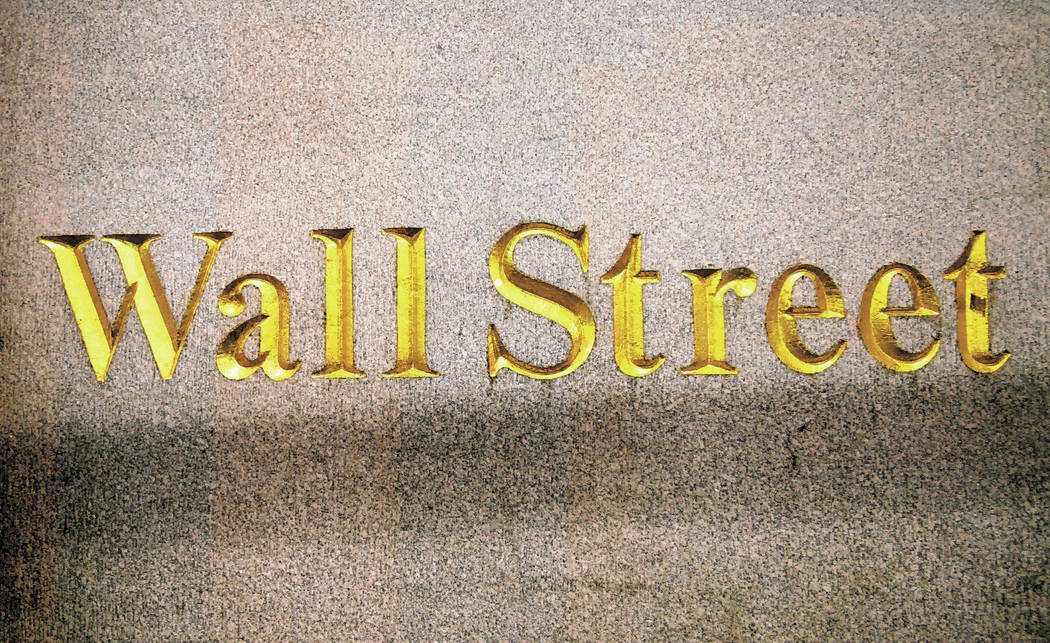EDITORIAL: Nevada PERS counting on unrealistic investment assumptions
The current stock market volatility is another reminder of the precarious position of public pension systems, including Nevada’s plan for state workers. That’s because public pensions invest heavily in volatile assets, like stocks.
Across the country, state and local pension plans are only 73 percent funded, according to a review of 180 plans by the Center for Retirement Research at Boston College. The Public Employees’ Retirement System of Nevada does slightly better, coming in at around 75 percent funded. But neither statistic is encouraging.
“State and local pension plans have about $4.4 trillion in assets according to the Federal Reserve,” The Wall Street Journal reported last week, “$4.2 trillion less than they need to pay for promised future benefits.”
Imagine the uproar if pension plan officials announced they were going to pay out only 75 percent of promised benefits. Yet that’s all the assets most of these pension plans currently have — assuming they hit their investment assumptions.
This is especially concerning, because pension systems are riding a 10-year-wave of positive investment returns. The S&P 500 has more than tripled in value since the beginning of 2009. If pension systems are only 75 percent funded after a decade of healthy growth, what happens to the unfunded liability during the next downturn?
Pension managers, however, assure the public that there’s nothing to worry about. To make up for the deficits and growing obligations, they assume pension plans will earn a 7.4 percent return, on average. Nevada PERS assumes annual returns of 7.5 percent.
In fact, these projections disguise the real problem by likely underinflating long-term obligations by overestimating portfolio performance. Thirty years ago, a level of return of around 8 percent may have been realistic. As the Wall Street Journal reported last month, a 30-year U.S. Treasury bond had a return rate of almost 9 percent in 1987. This week, the yield on a 30-year U.S. Treasury bond was 2.25 percent.
To reach their optimistic return rates, pension plans have ramped up the risk and invested more heavily in stocks and hedge funds. For instance, the portfolio targets for Nevada PERS now include having 72 percent of its assets in stocks, real estate or private equity. In 2000, just 46 percent of its assets were in those types of investments.
While the economy grows, this strategy pays dividends. But it means the next downturn will hit PERS and other public pension plans harder than before. In a presentation at its July board meeting by Steve Edmundson, Nevada PERS’ investment officer, a slide noted PERS “must take risk to achieve return objectives.”
With 72 percent of its assets in volatile assets, that’s an understatement. Yet those increased risks mean the fund is also increasing the chances of exacerbating its long-term liabilities. The Journal reported last week that public pension funds with assets of more than $1 billion earned an average return of 6.79 percent for the most recent fiscal year, below their more rosy projections.
“When returns fall short, however, the amount the government must contribute increases,” the Journal noted, “potentially diverting money from other public services.” Or leading to tax hikes on the private sector taxpayers who are ultimately responsible for funding these generous retirement plans.
Yet PERS officials aren’t interested in acknowledging that risk. PERS executive officer Tina Leiss assured lawmakers earlier this year that the system will be fully funded in 18 years. Even though the fund was running ahead of projections with an 8.5 percent return in fiscal 2019, that’s a highly questionable assumption.
Nevada PERS and other public pension systems need to be honest about the increased level of risk they’ve taken on to meet investment return objectives that are no longer realistic.

















